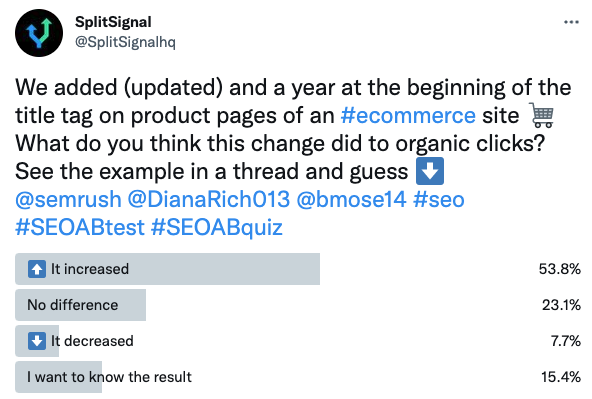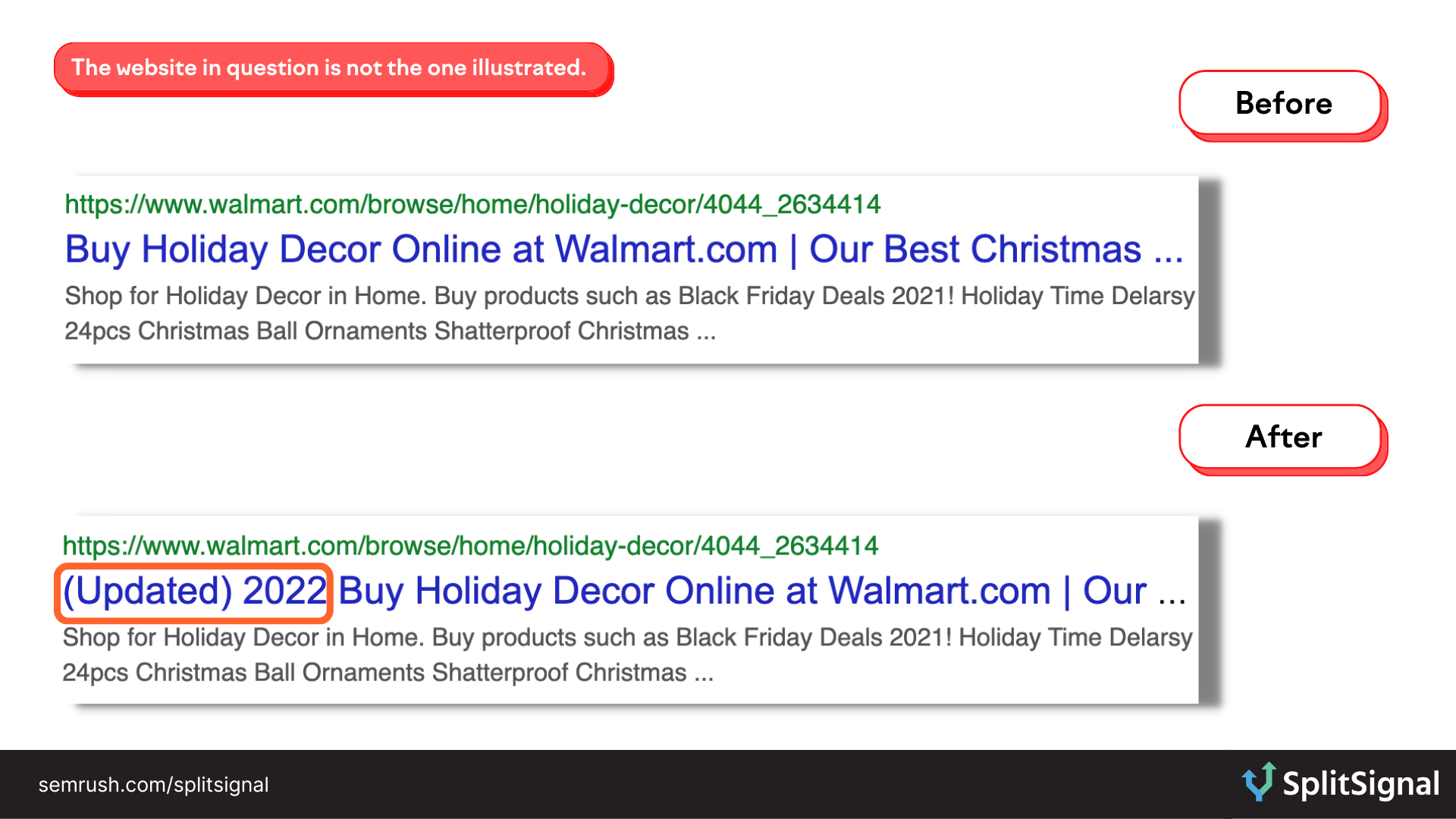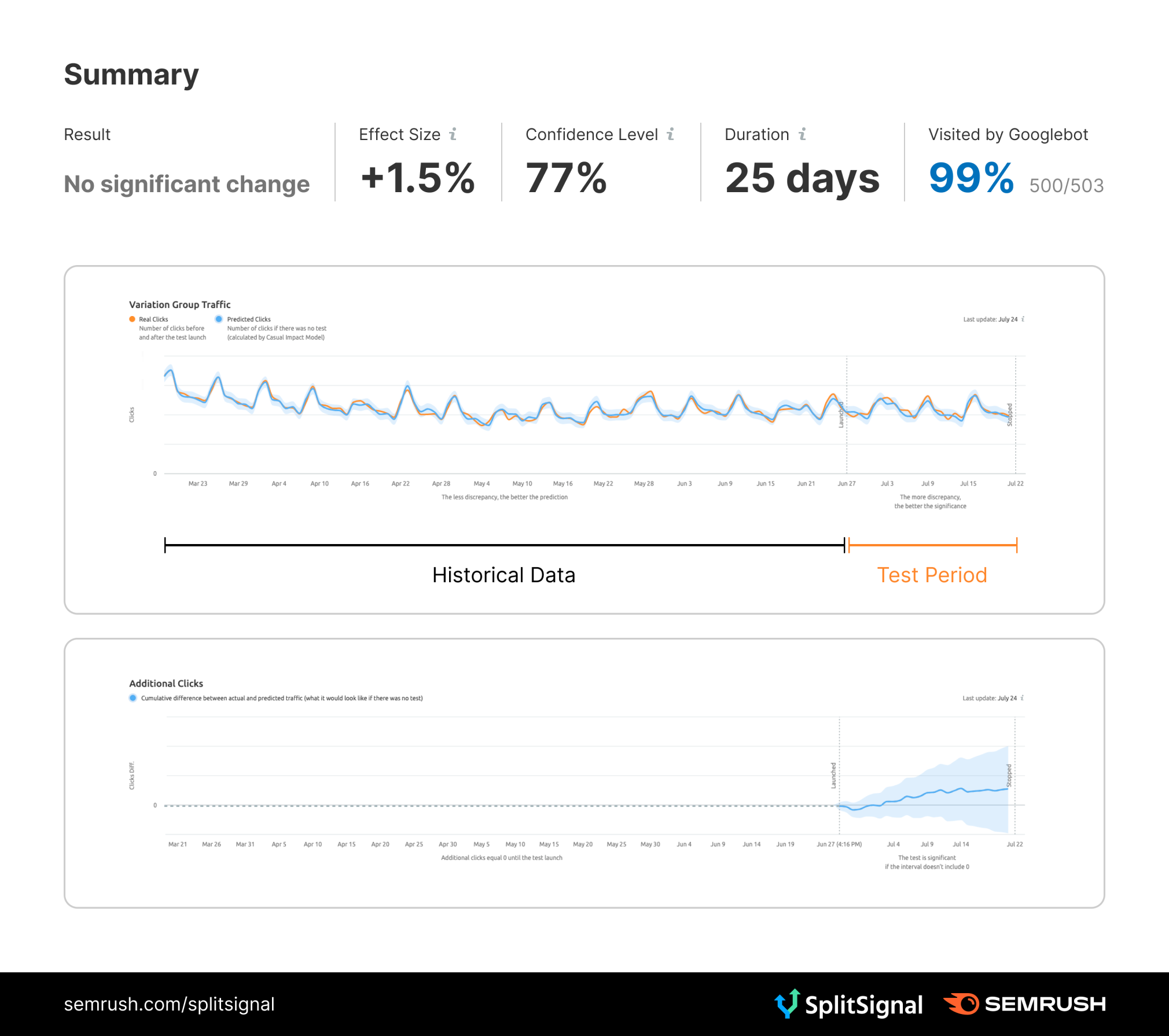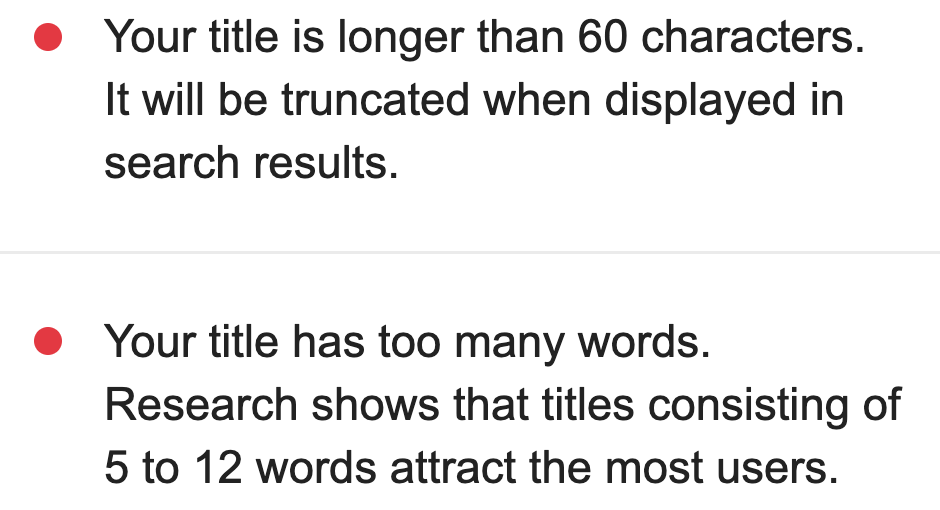Before you start: what do you know about SEO split-testing? If you’re unfamiliar with the principles of statistical SEO split-testing and how SplitSignal works, we suggest you start here or request a demo.
As always, before we publish our findings, we ask our Twitter followers to vote:

They are also encouraged to explain why they believe a change will have a positive or a negative result. This time around, only 23% got it right. You will soon find out why.
First, let's see what other SEO specialists have to share:
Vladimir Gertner, Senior Project Manager at Content HotSpot:
So, there are several factors to consider.
1. The [Updated] addition is generally seen as a positive thing
2. Having your title too long is seen as a negative thing
3. I want to see the test for moving keywords closer to the beginning of a title
4. It's Walmart, i don't think people really care about "updated"
5. It's holiday decor; isn't it always updated?
So, overall, I think this will have a slightly negative result. While the "updated" tag probably helps, it just brings a sense of clutter, and I am not sure SERPS or users will appreciate it.
Of course, I could be wrong.
Uroš Stanimirović, Content Writer & Editor at Brid.TV:
Interesting case. Frankly, for an e-commerce product page, I'd say the addition doesn't make much sense. Blog posts and informational content, in general, are more influenced by recency than product pages.
If the added line was (Restocked) or something more transactional, that would make more sense and would likely impact the result positively.
As it is in the experiment, I don't think the change will be favorable. There are better ways to improve the quality of the Meta Title for product pages imho.
Introduction
This SplitSignal test looked at adding the year to the title tag with “(Updated) 2022” at the beginning of the title.
We wanted to know if having the text “(updated)” and the year “2022” at the beginning of the title would make people more likely to click on an organic result.
Here is what the variant and control test cases looked like.
Variant: (Updated) 2022 Buy Product Type Online at Brand Name | Our Best Key Word Deals
Control: Buy Product Type Online at Brand Name | Our Best Key Word Deals
See an example below:

The Hypothesis
By adding “(updated)” it will appear more current. By adding the year 2022, it will also appear as more current and relevant.
There are phycological and historical case studies that support this hypothesis.
A similar test in 2020 that used the current month and year in the title showed a fairly conclusive 5% positive result.
Headlines that contain a number tend to stand out and result in more organic clicks.
Google addressed this question when John Muller was asked about including the publication date of an article in the title.
Here is what John Muller said when asked if we should include the published date in the title;
“If you want to. I don’t think it changes anything. For news articles, I do think it makes sense to include the date in various places on the page, and that can include the title. Just because with news articles we try to understand what the primary date is of the page. And we do that by looking at all of the mentions and things that you have on the page. And we can confirm that date with these mentions on the page, then it’s easier for us to pick that up, but I think for a page that is changing constantly like currency prices like you mentioned… I don’t think it’s critical to have the date in the title.”
So ….. Historical tests and psychology say that it should matter, but Google says that it doesn’t matter ….. Hmmm ….. Hence we test! We should also note that it is hard to answer specific cases, which is general advice. This is another reason why it is important to conduct specific and targeted tests using an SEO split testing tool like SplitSignal, rather than rely on past tests.
The Test
The test changed the titles of 503 variant URLs and kept the title the same on 489 URLs.
The test lasted 25 days and had almost complete 99% coverage by Googlebot during this time. There was good stability in the traffic levels and algorithm in the period around the test, suggesting no major unattributable influences at play.
The Results
The results of this test are classified as having no significant effect. However, as is always the case there is a little bit more to it than that.

Despite the low confidence and statistical characterization of no significant effect, you can see that the trend is slightly positive, just not with the confidence level that would be sufficient to call this a win and make a solid recommendation.
Not everything is clear-cut, nor does it repeat historical tests - this is why split testing is so valuable!
Why
Given that the result wasn’t clearly positive or negative, here we discuss some of the factors that may have led to this result and some of the reasons that may have given a confounded answer.
This test case was perhaps too broad, although there is always a delicate balance of volume to get good data and the specificness of a test.
Time Sensitivity
The time sensitivity to a page, the purpose of the page, and search intent all add up to whether the addition of “(Updated)” and the year “2022” are useful.
Breaking down the URLs in this experiment, some URLs were time-sensitive products, and some were not. Some of the products were seasonal and holiday related, whereas some were not.
Some of the products were not time-aligned, e.g, a June / July search is not likely to be very well aligned or care about them being updated or current when the time alignment is not close to the actual holiday the product is targeting.
Keyword proximity
An important concept in titles and SEO content more broadly is proximity. This title tag modifier was what is termed as front-loaded. Front loading your keyword to have the keyword proximity be at the beginning of the title tag has a well-recognized positive effect. However, adding the year “2022” and “(updated)” at the beginning may well have had a negative effect in terms of keyword proximity that devalued the benefit of time sensitivity.
Title Length
The title length was fairly significantly affected in this test, with 15 characters added to the title. The optimum title tag length is 55-65 characters.
The original control example title is 71 characters, whereas the variant example is 88 characters.
Variant: (Updated) 2022 Buy Product Type Online at Brand Name | Our Best Key Word Deals
Control: Buy Product Type Online at Brand Name | Our Best Key Word Deals
It could be that while the title element was modified, the actual title that was displayed in the Google SERPs was truncated and or modified. Titles of 88 characters in length are well in the territory of titles that get dynamically rewritten and modified to match the specific query.
As I write this, Semrush’s content writing assistant reminds me of it too!

Summary
The test result wasn’t significant, but that’s OK. Not everything is a home run, nor does it repeat previous tests.
It's important to understand and consider all of the parameters at play that leads to this result. This helps us learn and tailor testing for future more specific tests. This also helps add to the general SEO corpus and understand how keywords and title elements work together.
